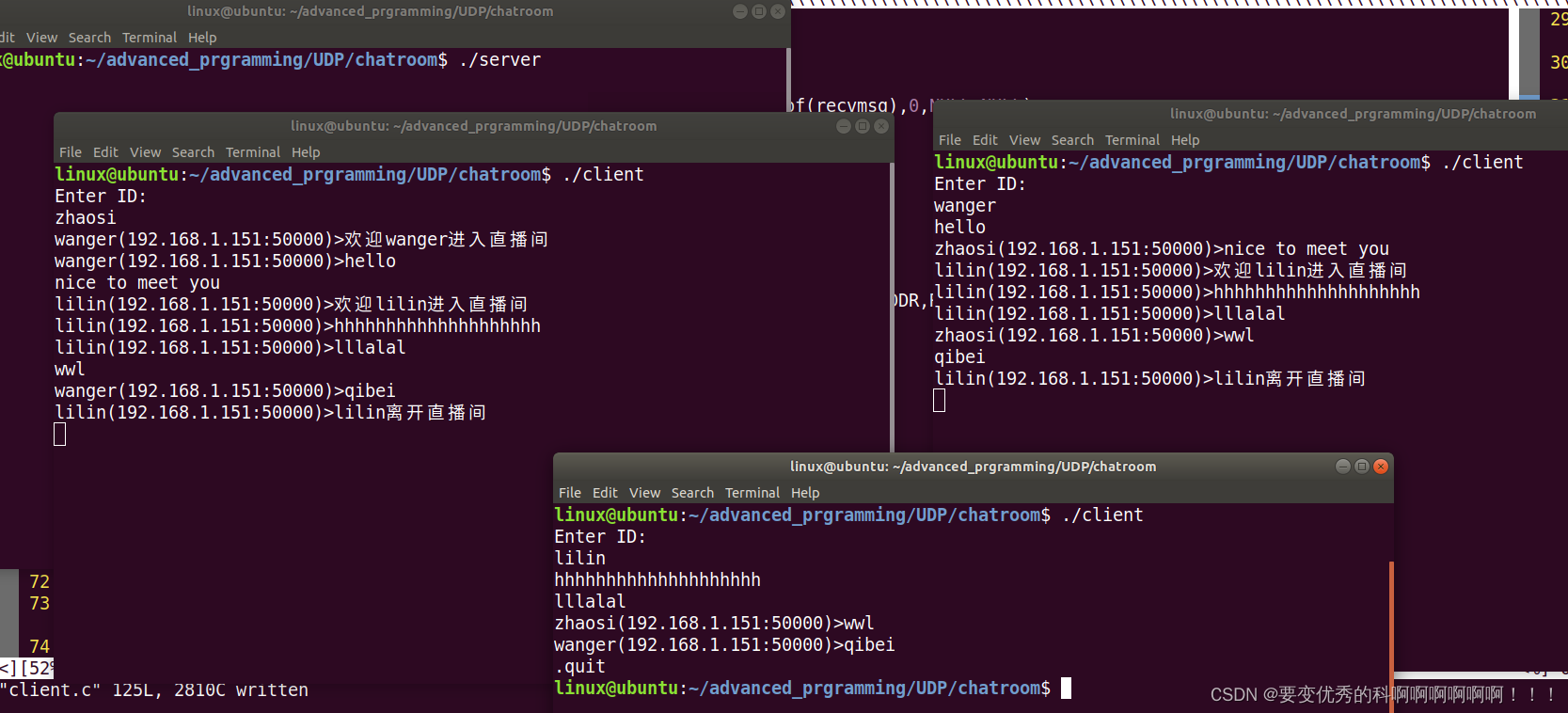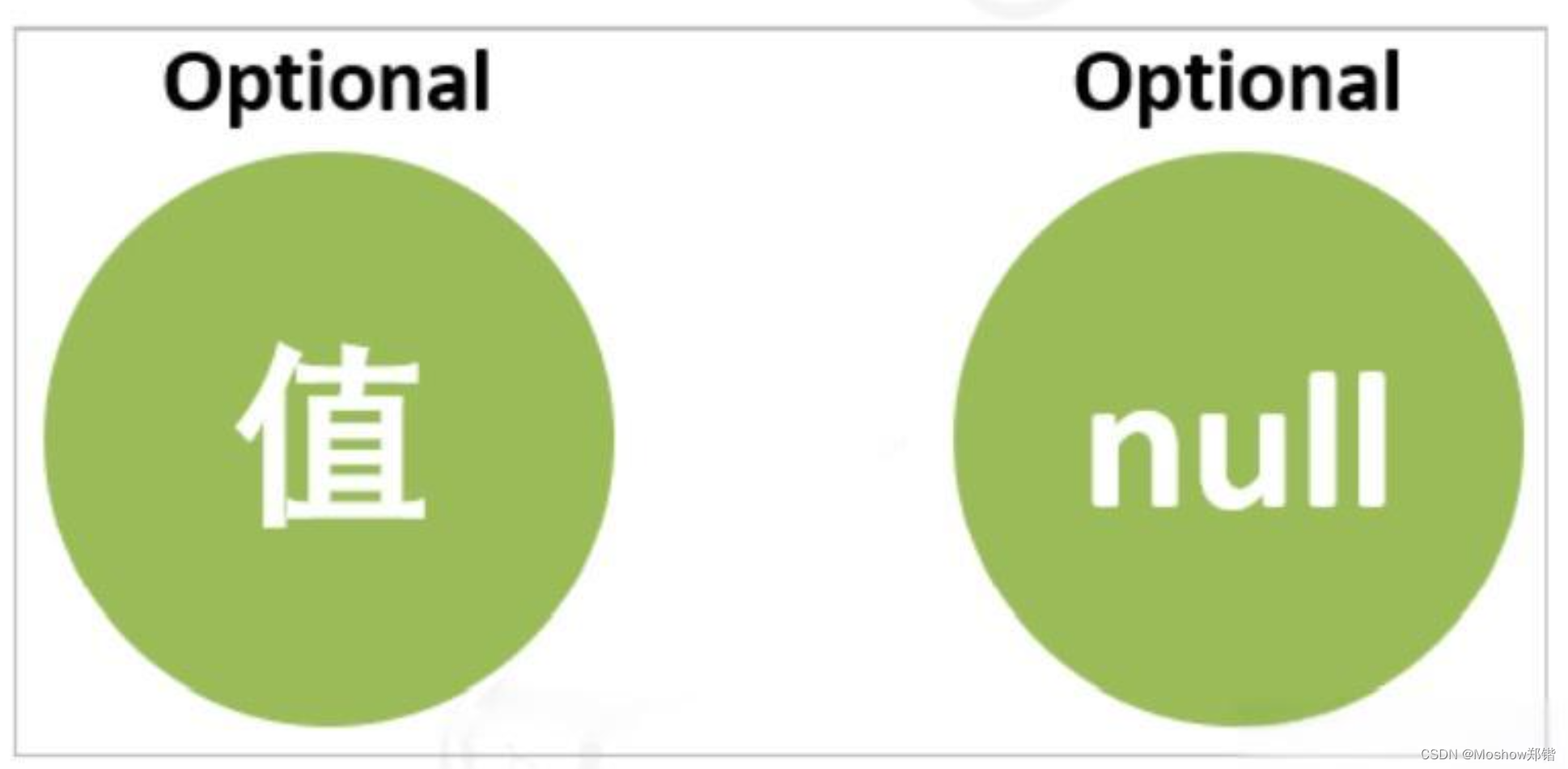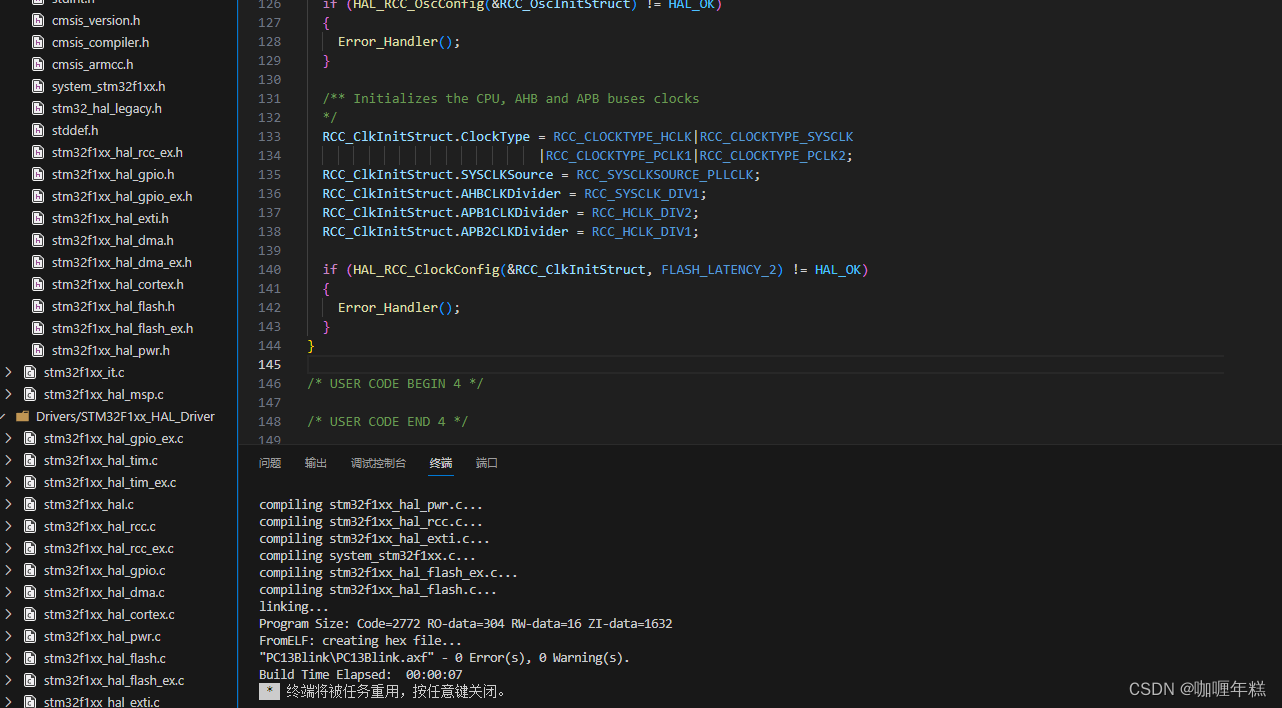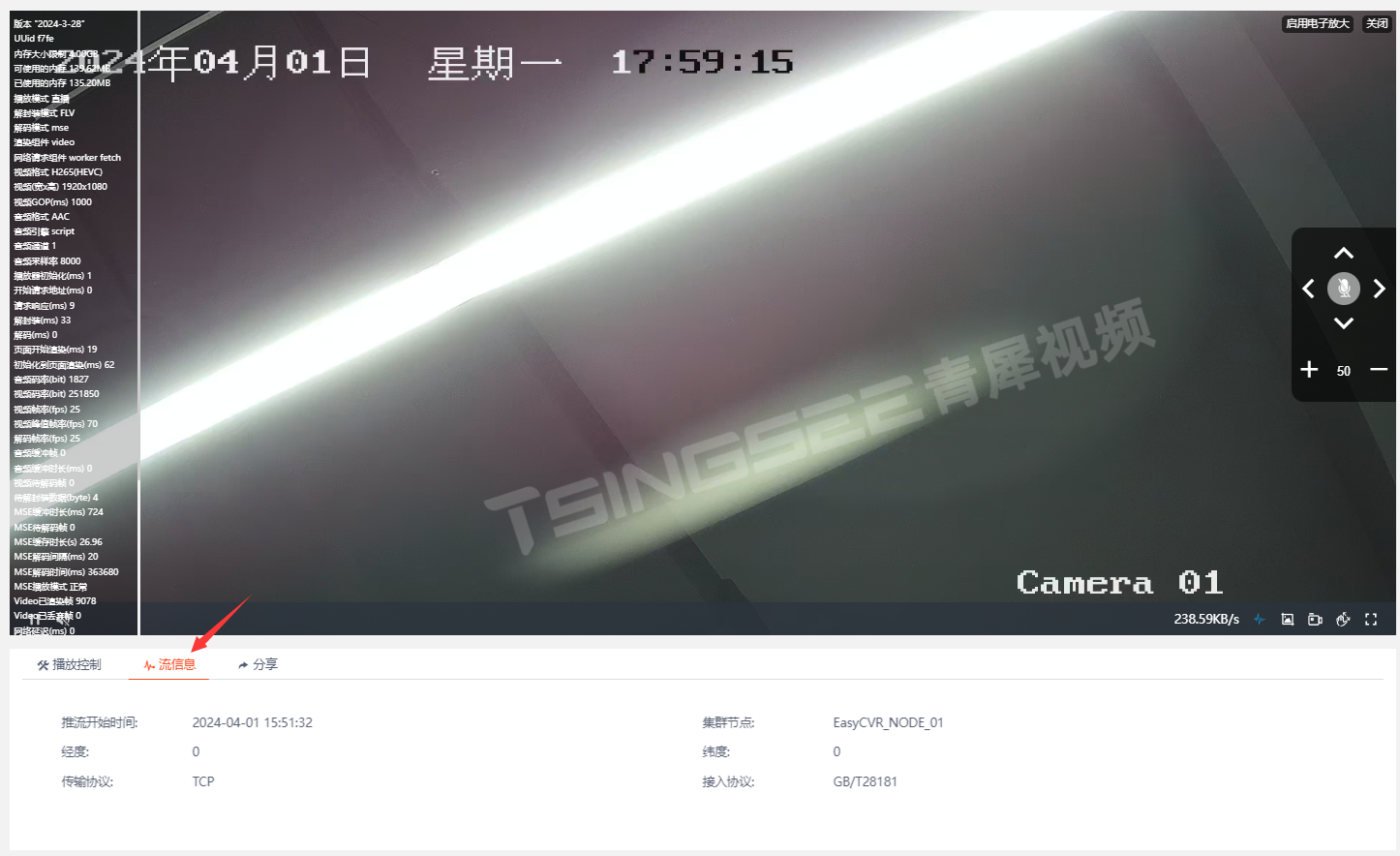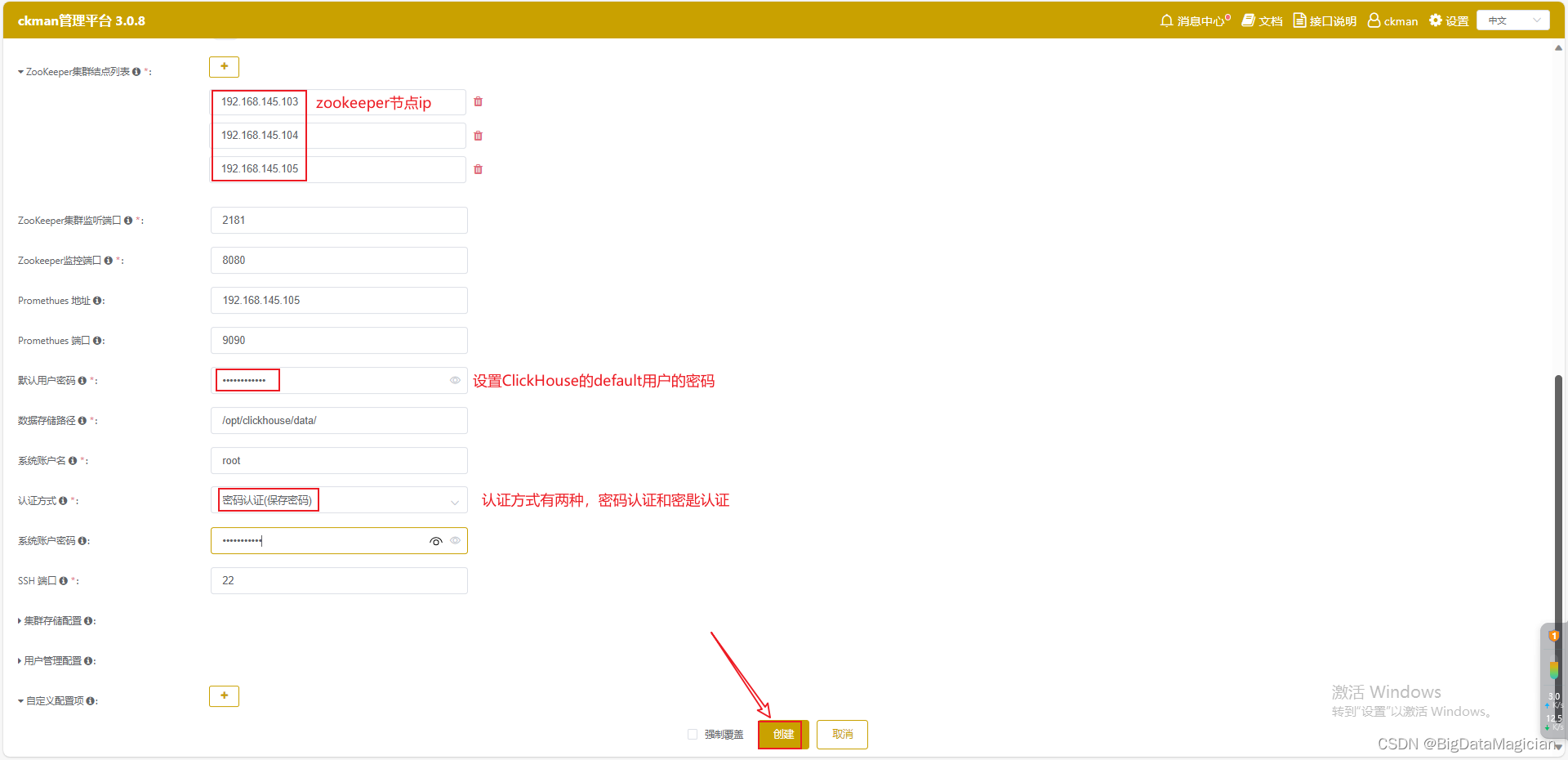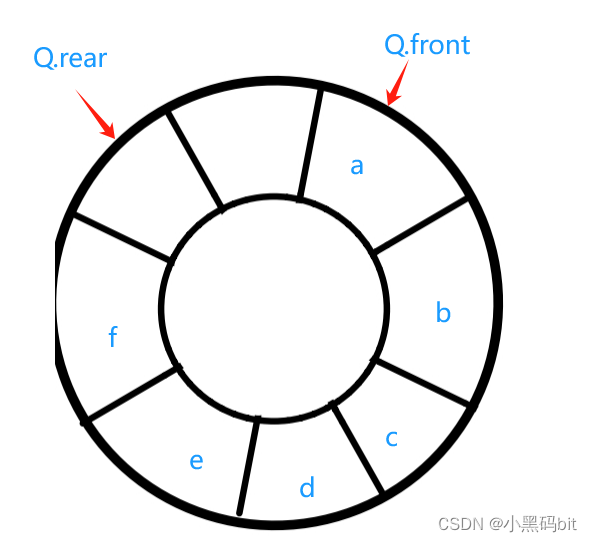目录
list使用
reverse
sort
unique
splice
list模拟实现
类与成员函数声明
节点类型的定义
非const迭代器的实现
list成员函数
构造函数
尾插
头插
头删
尾删
任意位置插入
任意位置删除
清空数据
析构函数
拷贝构造函数
赋值重载函数
const迭代器的设计
终极版迭代器的实现
迭代器扩充小知识
list使用
list的诸多使用与前面博客讲解的string仍然类似,我们此处只讲解比较特殊的接口函数
list的底层是带头双向循环链表,在我的数据结构专栏博客 带头双向循环链表_CSDN博客 已经讲解过了,重点是体会带头双向循环链表与顺序表的不同,尤其是某个位置插入与删除数据的效率!
reverse
void test_list1()
{
list<int> lt;
lt.push_back(1);
lt.push_back(2);
lt.push_back(3);
lt.push_back(4);
for (auto e : lt)
{
cout << e << " "; //1 2 3 4
}
cout << endl;
lt.reverse(); //逆置链表
for (auto e : lt)
{
cout << e << " "; //4 3 2 1
}
cout << endl;
}sort
void test_list2()
{
list<int> lt;
lt.push_back(2);
lt.push_back(3);
lt.push_back(4);
lt.push_back(1);
for (auto e : lt)
{
cout << e << " "; //2 3 4 1
}
cout << endl;
//默认是升序 < less
//lt.sort();
//降序: > greater
greater<int> gt;
lt.sort(gt);
lt.sort(greater<int>()); //匿名对象
for (auto e : lt)
{
cout << e << " "; //4 3 2 1
}
cout << endl;
}注意: list的排序无法使用算法库中的sort,主要原因是list不支持随机访问的迭代器
迭代器类型按性质或者底层实现分为三种:
1.单向:只支持++, 单链表/哈希表
2.双向:++与--都支持,双向链表/红黑树(map和set)
3.随机:++/--/+/- vector/string/deque注意: 2是兼容1的,3是兼容2的(本质是继承关系)


unique
void test_list3()
{
list<int> lt;
lt.push_back(4);
lt.push_back(1);
lt.push_back(1);
lt.push_back(2);
lt.push_back(5);
lt.push_back(5);
lt.push_back(3);
for (auto e : lt)
{
cout << e << " "; //4 1 1 2 5 5 3
}
cout << endl;
lt.sort();
lt.unique(); //把相邻的重复去掉, 配合sort可以达到去重的功能
for (auto e : lt)
{
cout << e << " "; //1 2 3 4 5
}
cout << endl;
}splice

void test_list5()
{
list<int> lt1;
lt1.push_back(1);
lt1.push_back(2);
lt1.push_back(3);
lt1.push_back(4);
list<int> lt2;
lt2.push_back(10);
lt2.push_back(20);
lt2.push_back(30);
lt2.push_back(40);
list<int>::iterator it = lt1.begin();
++it;
lt1.splice(it, lt2); //将lt2嫁接到lt1第2个位置之后, lt2就为空了!
for (auto e : lt1)
{
cout << e << " "; //1 10 20 30 40 2 3 4
}
cout << endl;
for (auto e : lt2)
{
cout << e << " "; //空
}
cout << endl;
}void test_list5()
{
list<int> lt1;
lt1.push_back(1);
lt1.push_back(2);
lt1.push_back(3);
lt1.push_back(4);
list<int> lt2;
lt2.push_back(10);
lt2.push_back(20);
lt2.push_back(30);
lt2.push_back(40);
lt1.splice(lt1.begin(), lt2, lt2.begin()); //将lt2的第一个节点接到lt1开始
for (auto e : lt1)
{
cout << e << " "; //10 1 2 3 4
}
cout << endl;
for (auto e : lt2)
{
cout << e << " "; //20 30 40
}
cout << endl;
}
void test_list5()
{
list<int> lt1;
lt1.push_back(1);
lt1.push_back(2);
lt1.push_back(3);
lt1.push_back(4);
list<int> lt2;
lt2.push_back(10);
lt2.push_back(20);
lt2.push_back(30);
lt2.push_back(40);
lt1.splice(lt1.begin(), lt2, lt2.begin(), lt2.end()); //将lt2的全部接到lt1开始
for (auto e : lt1)
{
cout << e << " "; //10 20 30 40 1 2 3 4
}
cout << endl;
for (auto e : lt2)
{
cout << e << " "; //空
}
cout << endl;
}list模拟实现
关于带头双向链表的结构与实现可以直接看我之前的博客: 带头双向循环链表-CSDN博客

类与成员函数声明
namespace dck
{
//每个节点的类型
template <class T>
struct list_node
{
T _data; //数据域
list_node<T>* _next; //前驱指针
list_node<T>* _prev; //后继指针
list_node(const T& x = T()); //构造函数
};
//非const迭代器
template <class T>
struct __list_iterator //前加_表示内部的实现
{
typedef list_node<T> Node;
Node* _node;
//构造函数
__list_iterator(Node* node);
//迭代器++(前置++)
typedef __list_iterator<T> self;
self& operator++();
//迭代器--(前置--)
self& operator--();
//迭代器++(后置++)
self operator++(int);
//迭代器--(后置--)
self operator--(int);
//迭代器解引用
T& operator*();
T* operator->();
//两个迭代器进行比较
bool operator!=(const self& s);
bool operator ==(const self& s);
};
//list的类型
template <class T>
class list
{
typedef list_node<T> Node;
public:
void empty_init(); //空初始化
list(); //构造函数
void push_back(const T& x); //尾插
void push_front(const T& x); //头插
void pop_front(); //头删
void pop_back(); //尾删
iterator insert(iterator pos, const T& x); //任意位置插入
iterator erase(iterator pos); //任意位置删除
iterator begin(); //起始位置迭代器
iterator end(); //结束位置迭代器
void clear(); //清空数据
~list(); //析构函数
list(const list<T>& lt); //拷贝构造函数
list<T>& operator=(const list<T>& lt); //赋值重载函数传统写法
void swap(list<T>& lt); //交换两个list, 赋值重载函数现代写法要调用swap函数
list<T>& operator=(list<T> lt); //赋值重载函数现代写法
private:
Node* _head;
size_t size; //记录链表中节点的个数,降低时间复杂度
};
}
节点类型的定义
//每个节点的类型
template <class T>
struct list_node
{
T _data;
list_node<T>* _next;
list_node<T>* _prev;
list_node(const T& x = T())
:_data(x)
,_next(nullptr)
,_prev(nullptr)
{}
};非const迭代器的实现
之前讲解的string与vector的迭代器都是原生指针,而list的迭代器不是原生指针,主要原因是因为list的底层是双向链表,如果用原生指针++,是无法到下一个节点的;直接解引用拿到的也不是具体的数据,而是整个节点对象;而迭代器的访问与遍历方式都是类似的,都是++, 解引用,判断!=, 所以我们只需要把list的迭代器设计成类,在类中对原生指针做封装
//迭代器的实现 --- 封装屏蔽了底层差异和细节,提供了统一的访问遍历修改方式!
template <class T>
struct __list_iterator //前加_表示内部的实现
{
typedef list_node<T> Node;
Node* _node;
//构造函数
__list_iterator(Node* node)
:_node(node)
{}
//迭代器++(前置++)
typedef __list_iterator<T> self;
self& operator++()
{
_node = _node->_next;
return *this;
}
//迭代器--(前置--)
self& operator--()
{
_node = _node->_prev;
return *this;
}
//迭代器++(后置++)
self operator++(int)
{
self tmp(*this);
_node = _node->_next;
return tmp;
}
//迭代器--(后置--)
self operator--(int)
{
self tmp(*this);
_node = _node->_prev;
return tmp;
}
//迭代器解引用
T& operator*()
{
return _node->_data;
}
T* operator->()
{
return &_node->_data;
}
//两个迭代器进行比较
bool operator!=(const self& s)
{
return _node != s._node;
}
bool operator ==(const self& s)
{
return _node == s._node;
}
};注意: 当list中存放的是自定义类型的对象时,使用->解引用时,写法如下:
class AA
{
public:
AA(int aa1 = 1, int aa2 = 1)
:_a1(aa1)
,_a2(aa2)
{}
int _a1;
int _a2;
};
void test_list()
{
list<AA> lt1;
lt1.push_back(AA(1, 2));
lt1.push_back(AA(3, 4));
lt1.push_back(AA(5, 6));
list<AA>::iterator it = lt1.begin();
while (it != lt1.end())
{
//显式应该这么写,因为operator->()拿到的是原生指针,还要再次->解引用拿到数据
cout << it.operator->()->_a1 << " " << it.operator->()->_a2 << endl;
//本来应该 it->->_a1, 但是可读性不好,因此编译器特殊处理, 省略了一个->
cout << it->_a1 << " " << it->_a2 << endl;
++it;
}
cout << endl;
}list成员函数
构造函数
//空初始化, 后续代码可能会用到,因此单独写出来
void empty_init()
{
_head = new Node;
_head->_next = _head;
_head->_prev = _head;
_size = 0;
}
//构造函数
list()
{
empty_init();
}尾插
void push_back(const T& x)
{
//自己实现
//Node* tail = _head->_prev; //找到尾节点
//Node* newnode = new Node(x); //开辟新节点
链接新节点
//tail->_next = newnode;
//newnode->_prev = tail;
//newnode->_next = _head;
//_head->_prev = newnode;
//_size++;
//调用insert函数
insert(end(), x);
}头插
//头插
void push_front(const T& x)
{
insert(begin(), x);
}头删
//头删
void pop_front()
{
erase(begin());
}尾删
//尾删
void pop_back()
{
erase(--end());
}任意位置插入
//insert
//在pos位置之前插入
//list的迭代器不存在失效的问题,因为不涉及扩容
//参考库的实现,还是给insert带上返回值
iterator insert(iterator pos, const T& x)
{
Node* cur = pos._node; //当前节点指针
Node* prev = cur->_prev; //前一个节点指针
Node* newnode = new Node(x); //开辟新节点
//链接
prev->_next = newnode;
newnode->_prev = prev;
newnode->_next = cur;
cur->_prev = newnode;
++_size;
return iterator(newnode); //返回新插入节点位置的迭代器
}任意位置删除
//erase之后,迭代器pos失效,因为当前节点已经被释放了!
//因此我们给erase带上返回值
iterator erase(iterator pos)
{
Node* cur = pos._node; //当前节点指针
Node* prev = cur->_prev; //前一个节点指针
Node* next = cur->_next; //后一个节点指针
delete cur; //释放当前节点
//链接前一个节点和后一个节点
prev->_next = next;
next->_prev = prev;
--_size;
return iterator(next); //返回释放节点的下一个位置
}迭代器接口
iterator begin()
{
//return iterator(_head->_next);
return _head->_next; //单参数的构造函数支持隐式类型转化
}
iterator end()
{
//return iterator(_head);
return _head; //单参数的构造函数支持隐式类型转化
}清空数据
//清空数据(不清除带哨兵位的头节点)
void clear()
{
iterator it = begin();
while (it != end())
{
it = erase(it);
}
}析构函数
//析构函数
~list()
{
clear();
delete _head;
_head = nullptr;
}拷贝构造函数
//拷贝构造
list(list<T>& lt)
{
empty_init();
for (auto e : lt)
{
push_back(e);
}
}赋值重载函数
传统写法
//赋值重载传统写法
list<T>& operator=(const list<T>& lt)
{
if (this != <)
{
clear();
for (auto e : lt)
{
push_back(e);
}
}
return *this;
}现代写法
//赋值重载现代写法
void swap(list<T>& lt)
{
std::swap(_head, lt._head);
std::swap(_size, lt._size);
}
list<T>& operator=(list<T> lt)
{
swap(lt);
return *this;
}const迭代器的设计
上述代码实现了非const迭代器,本质就是封装了一个类,提供了对应的接口,而const迭代器本质就是迭代器指向的内容不可修改,因此不可以直接写const iterator, 这个const修饰的是迭代器本身不能被修改,那迭代器如何++访问数据呢?? 因此非const迭代器应该是一个独立的类
//非const迭代器
template <class T>
struct __list_const_iterator //前加_表示内部的实现
{
typedef list_node<T> Node;
Node* _node;
//构造函数
__list_const_iterator(Node* node)
:_node(node)
{}
//迭代器++(前置++)
typedef __list_const_iterator<T> self;
self& operator++()
{
_node = _node->_next;
return *this;
}
//迭代器--(前置--)
self& operator--()
{
_node = _node->_prev;
return *this;
}
//迭代器++(后置++)
self operator++(int)
{
self tmp(*this);
_node = _node->_next;
return tmp;
}
//迭代器--(后置--)
self operator--(int)
{
self tmp(*this);
_node = _node->_prev;
return tmp;
}
//迭代器解引用
const T& operator*() const
{
return _node->_data;
}
const T* operator->() const
{
return &_node->_data;
}
//两个迭代器进行比较
bool operator!=(const self& s)
{
return _node != s._node;
}
bool operator ==(const self& s)
{
return _node == s._node;
}
};
list类中提供const迭代器的begin和end接口即可:
//list的类型
template <class T>
class list
{
typedef list_node<T> Node;
public:
//提供迭代器
typedef __list_iterator<T> iterator;
typedef __list_const_iterator<T> const_iterator;
const_iterator begin() const
{
//return iterator(_head->_next);
return _head->_next; //单参数的构造函数支持隐式类型转化
}
const_iterator end() const
{
//return iterator(_head);
return _head; //单参数的构造函数支持隐式类型转化
}
};但是上面的写法太冗余了,非const迭代器和const迭代器都是封装了类,类中的实现大同小异,参考了STL库中的实现以后,其实只需要一个类+增加模板参数即可, 实现如下:
终极版迭代器的实现
//迭代器
template <class T, class Ref, class Ptr>
struct __list_iterator //前加_表示内部的实现
{
typedef list_node<T> Node;
Node* _node;
typedef __list_iterator<T, Ref, Ptr> self;
//构造函数
__list_iterator(Node* node)
:_node(node)
{}
//迭代器++(前置++)
self& operator++()
{
_node = _node->_next;
return *this;
}
//迭代器--(前置--)
self& operator--()
{
_node = _node->_prev;
return *this;
}
//迭代器++(后置++)
self operator++(int)
{
self tmp(*this);
_node = _node->_next;
return tmp;
}
//迭代器--(后置--)
self operator--(int)
{
self tmp(*this);
_node = _node->_prev;
return tmp;
}
//迭代器解引用
Ref operator*()
{
return _node->_data;
}
Ptr operator->()
{
return &_node->_data;
}
//两个迭代器进行比较
bool operator!=(const self& s)
{
return _node != s._node;
}
bool operator ==(const self& s)
{
return _node == s._node;
}
};list类:
template <class T>
//list的类型
class list
{
typedef list_node<T> Node;
public:
//提供迭代器
typedef __list_iterator<T, T&, T*> iterator;
typedef __list_iterator<T, const T&, const T*> const_iterator;
iterator begin()
{
return iterator(_head->_next);
return _head->_next; //单参数的构造函数支持隐式类型转化
}
iterator end()
{
return iterator(_head);
return _head; //单参数的构造函数支持隐式类型转化
}
const_iterator begin() const
{
//return iterator(_head->_next);
return _head->_next; //单参数的构造函数支持隐式类型转化
}
const_iterator end() const
{
//return iterator(_head);
return _head; //单参数的构造函数支持隐式类型转化
}
};迭代器扩充小知识
场景1:想实现一个打印函数, 无论list的节点是什么类型都能打印
template <class T>
void Print(const list<T>& lt)
{
//list<T>为未实例化的类模板,编译器不能直接去他里面去找
//编译器无法识别list<T>::const_iterator是内嵌类型还是静态成员变量
//前面加一个typename就是告诉编译器,这里是一个类型,等list<T>实例化再去类里面去取
typename list<T>::const_iterator it = lt.begin();
while (it != lt.end())
{
cout << *it << " ";
it++;
}
cout << endl;
}
void test_list5()
{
list<int> lt1;
lt1.push_back(1);
lt1.push_back(2);
lt1.push_back(3);
lt1.push_back(4);
lt1.push_back(5);
Print(lt1);
//list不会存在浅拷贝的问题,因为不涉及扩容
list<string> lt2;
lt2.push_back("1111111111111111");
lt2.push_back("1111111111111111");
lt2.push_back("1111111111111111");
lt2.push_back("1111111111111111");
lt2.push_back("1111111111111111");
Print(lt2);
}场景2:想实现一个打印函数, 无论是哪个STL,都能使用同一个打印函数
//模板(泛型编程)本质: 本来应该由我们做的事情交给编译器去做了!
template <typename Container>
void print_container(const Container& con)
{
typename Container::const_iterator it = con.begin();
while (it != con.end())
{
cout << *it << " ";
it++;
}
cout << endl;
}
void test_list5()
{
list<int> lt1;
lt1.push_back(1);
lt1.push_back(2);
lt1.push_back(3);
lt1.push_back(4);
lt1.push_back(5);
print_container(lt1);
//list不会存在浅拷贝的问题,因为不涉及扩容
list<string> lt2;
lt2.push_back("1111111111111111");
lt2.push_back("1111111111111111");
lt2.push_back("1111111111111111");
lt2.push_back("1111111111111111");
lt2.push_back("1111111111111111");
print_container(lt2);
vector<string> v;
v.push_back("2222222222222222");
v.push_back("2222222222222222");
v.push_back("2222222222222222");
v.push_back("2222222222222222");
v.push_back("2222222222222222");
print_container(v);
}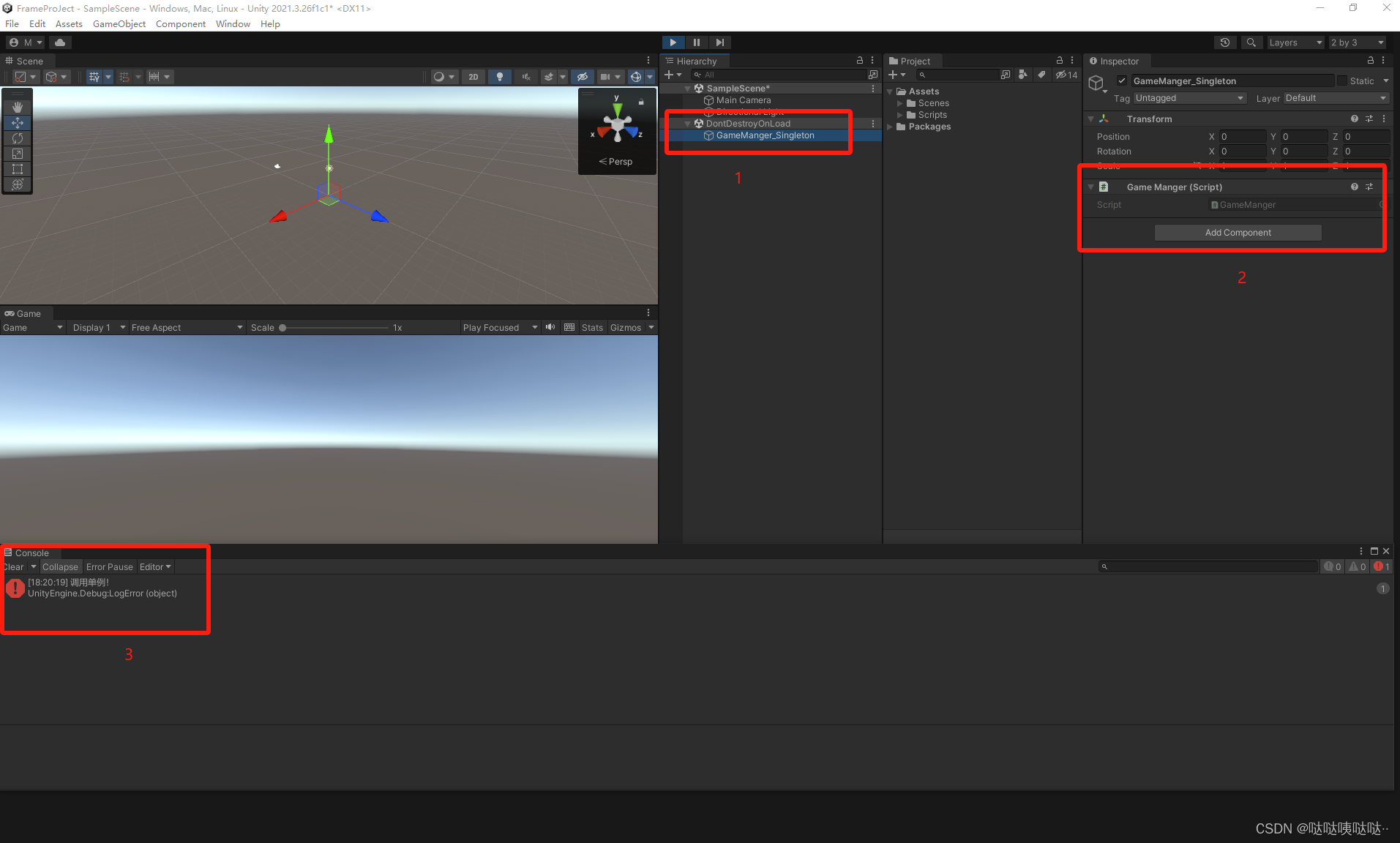
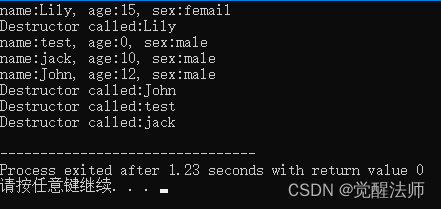

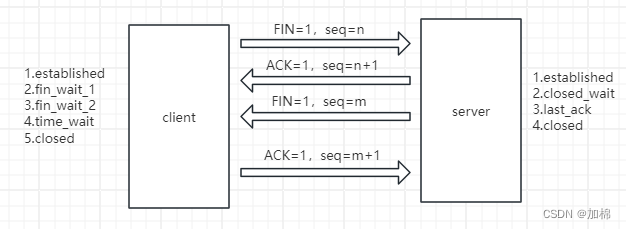


![练习 17 Web [极客大挑战 2019]PHP](https://img-blog.csdnimg.cn/direct/2ca1741a82434f4a994791762229bea2.png)

